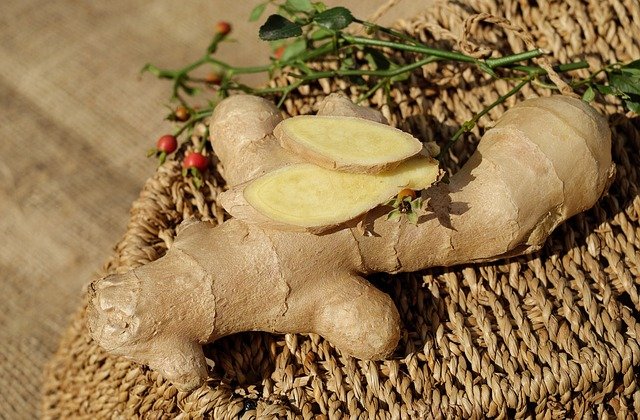In Vitro Antimicrobial Activity Evaluation of Ginger (Zingiber officinale) Absolute Ethanol Extract against Uropathogenic Escherichia coli (UPEC)

Downloads
Highlights:
1. Ginger (Zingiber officinale) has an antimicrobial activity against Uropathogenic Escherichia coli (UPEC) which commonly causes urinary tract infection (UTI) in women.
2. The minimum inhibitory concentration (MIC) and minimum bactericidal concentration (MBC) of ginger against UPEC in this study was 1000 mg/ml.
Abstract
Introduction: Uropathogenic Escherichia coli (UPEC) is commonly found in the urine culture of women with urinary tract infections (UTIs) and is often resistant to several antimicrobials. Herbals, such as ginger (Zingiber officinale), are known to have antimicrobial activity against various microorganisms. This study was conducted to determine the antimicrobial activity of ginger against UPEC.
Methods: This was a true experimental study to determine the minimum inhibitory concentration (MIC) and the minimum bactericidal concentration (MBC) using agar dilution method. The McFarland 0.5 suspension of UPEC was inoculated on agar with 6 different ginger concentrations, i.e. 2,000 mg/ml, 1,000 mg/ml, 500 mg/ml, 250 mg/ml, 125 mg/ml, and 62.5 mg/ml. The MIC and MBC were read as the lowest concentration without visible growth.
Results: No visible growth of bacteria on agar at a concentration of 2,000 mg/ml and 1,000 mg/ml. Thus, the value of MIC and MBC for UPEC was 1,000 mg/ml.
Conclusion: Ethanol extract of ginger has antimicrobial activity against UPEC. In this study, the MIC and MBC for UPEC was 1,000 mg/ml.
Hooton T. Uncomplicated Urinary Tract Infection. N Engl J Med 2012; 366: 1028–1037.
Bien J, Sokolova O, Bozko P. Role of Uropathogenic Escherichia coli Virulence Factors in Development of Urinary Tract Infection and Kidney Damage. Int J Nephrol 2012; 2012: 1–15.
Rané A, Dasgupta R. Urinary Tract Infection. London: Springer London. Epub ahead of print 2013.
Wijaya CH, Fathona D. Kandungan Gingerol dan Shogaol, Intensitas Kepedasan dan Penerimaan Panelis terhadap Oleoresin Jahe Gajah. Institut Pertanian Bogor. 2011.
Bode AM, Dong Z. The Amazing and Mighty Ginger. 2011.
Gull I, Saeed M, Shaukat H, et al. Inhibitory Effect of Allium Sativum and Zingiber Officinale Extracts on Clinically Important Drug Resistant Pathogenic Bacteria. Ann Clin Microbiol Antimicrob 2012; 11: 8.
Murray PR, Rosenthal KS, Pfaller MA. Medical Microbiology E-Book, 8th Edition. Elsevier, 2016.
Bharathi D., Kumari R., Lakshmi G., et al. Identification of Urovirulent Markers in Uropathogenic Escherichia Coli. Int J Curr Res Rev 2015; 7: 51–54.
Brooks G. Jawetz, Melnick, & Adelberg's Medical Microbiology, Twenty-Fifth Edition (LANGE Basic Science). Atlanta (US): McGraw-Hill Professional Publishing, 2010.
Rosmana D, Hardianto G, Debora MS K. Jahe Mengurangi Jumlah Koloni Uropathogenic Escherichia Coli pada Wanita Menopause dengan Infeksi Saluran Kemih Asimtomatis. Maj Obstet Ginekol 2018; 24: 1.
Semwal RB, Semwal DK, Combrinck S, et al. Gingerols and Shogaols: Important Nutraceutical Principles from Ginger. Phytochemistry 2015; 117: 554–568.
Li Y, Tran VH, Duke CC, et al. Preventive and Protective Properties of Zingiber Officinale (Ginger) in Diabetes Mellitus, Diabetic Complications, and Associated Lipid and Other Metabolic Disorders: A Brief Review. Evidence-Based Complement Altern Med 2012; 2012: 1–10.
Tille P. Bailey & Scott's Diagnostic Microbiology. 13th ed. Mosby, 2013.
Hasan HA, Raauf A, Razik BMA. Chemical Composition and Antimicrobial Activity of the Crude Extracts Isolated from Zingiber Officinale by Different Solvents. Pharm Anal Acta; 3. Epub ahead of print 2012. DOI: 10.4172/2153-2435.1000184.
Wang S, Zhang C, Yang G, et al. Biological Properties of 6-Gingerol: a Brief Review. Nat Prod Commun 2014; 9: 1027–30.
Mesomo MC, Corazza ML, Ndiaye PM, et al. Supercritical CO2 Extracts and Essential Oil of Ginger (Zingiber officinale R.): Chemical Composition and Antibacterial Activity. J Supercrit Fluids 2013; 80: 44–49.
Butt MS, Sultan MT. Ginger and its Health Claims: Molecular Aspects. Crit Rev Food Sci Nutr 2011; 51: 383–393.
Viljoen E, Visser J, Koen N, et al. A Systematic Review and Meta-Analysis of the Effect and Safety of Ginger in the Treatment of Pregnancy-Associated Nausea and Vomiting. Nutr J 2014; 13: 20.
Kubra IR, Rao LJM. An Impression on Current Developments in the Technology, Chemistry, and Biological Activities of Ginger ( Zingiber officinale Roscoe). Crit Rev Food Sci Nutr 2012; 52: 651–688.
Chen H, Soroka DN, Hu Y, et al. Characterization of Thiol-Conjugated Metabolites of Ginger Components Shogaols in Mouse and Human Urine and Modulation of the Glutathione Levels in Cancer Cells by [6]-Shogaol. Mol Nutr Food Res 2013; 57: 447–458. [PubMed]
Copyright (c) 2022 Angeline Felicia, Kartuti Debora, Ramadhani Ramadhani

This work is licensed under a Creative Commons Attribution-ShareAlike 4.0 International License.
1. The journal allows the author to hold the copyright of the article without restrictions.
2. The journal allows the author(s) to retain publishing rights without restrictions
3. The formal legal aspect of journal publication accessibility refers to Creative Commons Atribution-Share Alike 4.0 (CC BY-SA).




























